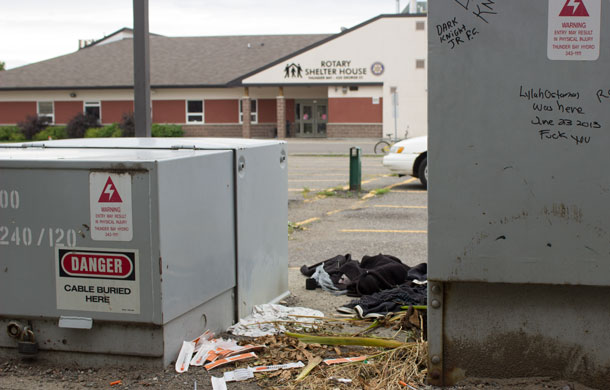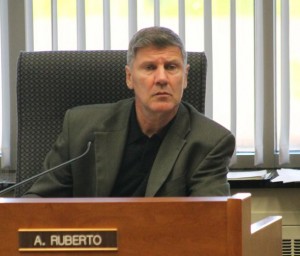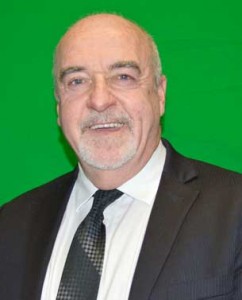
City Council Talks Smoking, Pets and Drugs
THUNDER BAY – If the talk on social media this past week was any indication, there is a lot of emotion in the city over how many pets people have. A motion brought forward simply to have Administration gather information on the practices in other jurisdictions.
Also on topic was discussion on smoking at the Thunder Bay Regional Health Sciences Centre. The TBRHSC is seeking help from the City in term of the non-smoking efforts at the hospital. The hospital is seeking to add teeth to their rules.
Council was told that what is happening is that by-law officers and enforcement would be extended at the TBRHSC to security officers. Manager Mark Smith commented that our city bylaws are complaint driven and “We are not well set up to deal with the enforcement”.
Mayor Hobbs asked how the smoking bylaws in the city have worked. Mark Smith commented that as a matter of process, we would have to change the current bylaws to the process to provide greater enforcement.
Collection of the fines was raised by Councillor Rhyholm. Councillor Hebert stepped in to clarify that his understanding was the existing bylaw would be enforced by the Thunder Bay District Health Unit and the TBRHSC Security Officers.
Councillors Rydholm and Hebert moved and seconded the motion. Councillor appear ready to move fast on this to allow passage of a bylaw. City Clerk John Hannan suggested that Council allow Administration to move forward. The motion received support from the entire Council.
Drug Strategy

There is a well documented relationship between drug abuse, and homelessness. Council was told that there is a real issue over housing for addicted individuals and a need for crisis housing. There is currently a 15 bed facility, and a needs assessment was established.
There is a need, Council was told for a strategy. The shelter needs are temporary solutions, and there is a need for more shelter beds. Only 42 of the beds at Shelter House are for those who are intoxicated or under the influence of substances.
Detox is another option, and it provides short term housing. Council was told that there needs to be plans for post treatment housing.
There is a major gap in services for those suffering from addiction and substance abuse. Having stable housing is needed by those struggling with substance abuse. The issue, Council was told was complex and required enhanced services from the city.
After care programs, to assist individuals as they recover from substance abuse are needed.
Mayor Hobbs asked how the managed alcohol program works, and is it a model for that idea. Hobbs and Council was told it is working, and is “quote unquote as a success”. The two key goals are reducing demand on Emergency Services and a better quality of life.
City Manager Tim Commisso commented that this is a broad report and that “What we are really trying to get from this report is a need from the city to implement and facilitate the Drug Strategy program.”
“Our role must also be that the provincial government must step up too,” added Commisso.
Councillor Foulds commented that “We need to do what we do for our citizens better”.
“This needs to be a part of a broader policy, Calgary for example has some good policies,” stated Tim Commisso. The City will take the process forward to the Association of Ontario Municipalities.
Councillor Pugh stated he will support the efforts. Pugh asked for information on the results from Calgary and sought input on efforts from other jurisdictions. Councillors were told that Calgary was the first community to implement this type of plan. Victoria has implemented this program and Vancouver has seen a massive reduction in homelessness.
Councillor Hebert asked about using mobile homes as temporary housing. “It a possibility using pre-fab housing?” asked Hebert.
The Councillor was told there are 10 of the 19 recommendations that have been identified as priorities.
In engaging with partners at the senior levels of government and in the private sector Patty Hajdu said that it is a long term process. “When a person comes out of treatment for addiction, just like a person coming out of cancer treatment it is a long term process.”
What do we have to do right now?

Councillor Ruberto sought costing for the programs, “The costs of counselling, healthcare, and education, it adds up to millions of dollars”.
“We have had the evidence for a long time, what can we do to support you right now?” asked Ruberto.
Tim Commisso said, “This city has been a willing partner, and in the form of housing, there needs to be money injected into the system. We can’t assume there will be savings in the delivery of the programs that will be clawed back”.
“We are dealing with an issue that is broader than any one municipality”.
Councillor Ruberto asked what about taking some of the existing building in the city and turning them over to house programs.
“At the end of the day, it comes down to building new is cheaper than renovating,” stated Commisso.
Councillor Johnson asked about the ‘Made in Thunder Bay Drug Strategy’ and “How do you feel Fort William First Nation can fit into this?”
Council was told that it fits in well because many people from Fort William First Nation live in the city.
The homeless and housing committee was sought to come in on the drug strategy committee, according to Patty Hajdu.
Councillor Virdiramo asked about how using a shelter for a home is not solving the problem. The Westfort Councillor was told that the goal in Calgary is that no one stays in a shelter for more than seven days.
“In Thunder Bay the average length of stay runs from 30 days to year round. Many of the people are unable to receive assessments, and those who are mandated to work with those individuals are not doing that,” according to Patty Hajdu. “WE are often providing the very basic needs of survival”.
The motion passed with the support of the entire council.
Pets in Thunder Bay
Councillor Ruberto says, “The majority of people who are pet owners are caring loving people”.
“However that said, there are some bad pet owners, this resolution coming forward is complaint driven. There are places in the city where there are twenty or more cats in the city. Hoarding of pets has become a big issue,” stated Ruberto. “Presently we have no bylaws in place, someone could have 100 dogs or cats”.

“Calgary is a leader in this area,” stated Ruberto. “Their plans should be looked at”.
“This is put forward for the pet, the public and the person who can’t take proper care of them”.
“We have to do something,” stated Ruberto.
Councillor Hebert suggested Administration also look to numbers of spayed or neutered pets. Mark Smith said that the provincial laws also cover this issue.
Mayor Hobbs commented that “This is a waste of time”.
“Why are we giving Administration this task?”
Councillor Ruberto said “After talking to Bylaw enforcement, they say this will help”.
Mark Smith commented that “The last time this was looked at, it was Councils path, in the 1980s, that Council concluded there was not a need for any by-laws”.
Councillor Foulds asked, “Do we have the tools?”
Mark Smith commented that “We have a sufficient number of rules”.
“The challenge comes in two fold at a minimum, staffing is one, and the other piece links to the social situations”.
Councillor Ruberto in concluding stated, “This is about getting information. This is complaint driven. We don’t work at 4PM, and what ends up happening is the police are called. Bylaw is saying this is a tool that they need. It has been 13 years since this is looked at.”
The motion was lost. Five Councillors supported the motion, the remainder were opposed.














